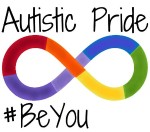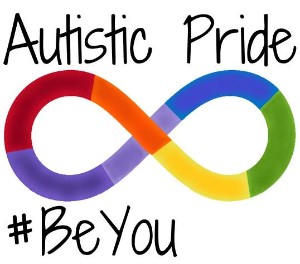
 Logo of the autism pride marchThe notion of neurodiversity appeared at the end of the 90s in an effort to de-pathologize mental illness and combat discrimination.
Logo of the autism pride marchThe notion of neurodiversity appeared at the end of the 90s in an effort to de-pathologize mental illness and combat discrimination.
Neurodiversity, a neologism that refers to the diversity in the neurocognitive functioning of individuals was proposed in 1998 by Australian Judy Singer who advocated for a society better able to accept diverse thinking styles. She explained on the site of the online support group InLv (Independent Living on the autistic spectrum of Martijn Dekker) that, just as significant as biodiversity, neurodiversity helps humankind to progress. Adopted by autism organisations for de-stigmatisation purposes, the concept had soon propagated via the Internet and the written press. It is currently used to describe any person whose cognitive functioning is different, and notably, persons who have been diagnosed with psychiatric conditions. Thus, a growing number of pathologies (autism, bipolar syndrome…) are redefined as another way to exist in the world. The approach aims to de-pathologize so-called mental illnesses by affirming the diversity of thought models and fighting against discrimination. In 2009, London saw the advent of the Danda association (Developmental Adult Neuro-Diversity Association), thought to bring together adults presenting with diverse problematics (dyspraxia, dyslexia, dyscalculia, Asperger’s syndrome etc.) which aimed to involve them in interactive and educative activities, and mutual support.
The broadening of the diagnosis criteria for autism effected in the late 80s /early 90s offered people who felt different but struggled to name their specificity, the opportunity to find a place in this diagram focused on social interaction and communication troubles. The accent put on the achievements of autistic types who had a successful professional career and the ubiquity of autistic persons with surprising skills in novels, films and series were accessory to taking the sting out of autism. Personal accounts from people with autistic traits gradually yielded a political awareness leading to the development of a particular culture with a new terminology and words like “neurotypical” to refer to non-autist people and “aspies” for people presenting with Asperger. The use of “we” contributed to the construction of a social movement, an “autistic” community casting out its stigmatising identity for a self-asserting one.
The fast dissemination of the concept of neurodiversity must be understood in the context of a broad propagation of a neuroscientific discourse and its impact on some aspects of life in our bio-medicalised contemporary societies. The growth and mediatisation of neuroscience in the 90s, the circulation of images of the brain in operation and theories on neuronal networks prompted some to choose to redefine autism as another way to think rather than a psychiatric condition. References to the brain appear to offer new expressive possibilities for people’s psychological disarray and enable them to turn a handicap into an advantage. Some neuroscientists and cognitive sciences researchers have seized upon this concept to explore those different thinking modes by focussing on individuals with speech and language skills and endowed with significant cognitive capabilities. Meanwhile, the parents of children with deep autistic traits view the neurodiversity rhetoric as beyond surrealist.
Follow the reading on the dictionnary : Drapetomania- Intelligence test
Read the paper in french : Neurodiversité
Références :
B. Chamak et B. Bonniau, “Neurodiversité : une autre façon de penser”, dans Chamak B. & Moutaud B. (dir.), Neurosciences et Société : enjeux des savoirs et pratiques sur le cerveau, Armand Colin, 2014, p. 211-230.
J. Singer, Neurodiversity : the birth of an idea, Lexington - Kentucky, 2017.
To quote this paper : Brigitte Chamak, "Neurodiversity" in Hervé Guillemain (ed.), DicoPolHiS, Le Mans Université, 2021.